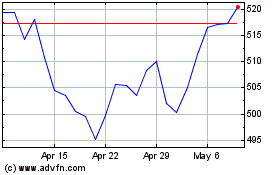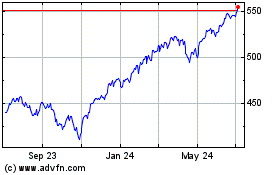When Fed QE Goes Bust - Real Time Insight
July 16 2012 - 10:17AM
Zacks
I'll admit it. I've been a Keynesian. To me,
pumping money into the economy, and monetizing debt through
quantitiatve easing (i.e., printing new money), was the best course
of action since 2008 because the alternative -- a
Japan-style deflationary spiral -- was unacceptable and entirely
avoidable. Inflation, of any amount, was worth all the
risks.
But something curious is going on. The economy is
not recovering in a robust way. After today's disappointing retail
sales trend continued, Goldman Sachs lowered their 2Q GDP estimate
another 2/10ths to 1.1%. They had dropped it to 1.3% from 1.6%
just last week on more dismal economic data.
Yet financial markets -- stocks, bonds, gold,
commodity prices -- seem to really benefit from QE. Below is a
chart from a group called Phoenix Capital Research which plots the
S&P 500 index minus the 24-hour pre-FOMC price
ramps.

Granted there are other ways of looking at the
effectiveness of QE on both markets and the economy. But today I am
wondering if QE is still a necessary evil, or if it's actually
distorting markets and could possibly damage the long-run health of
the economy.
What do you see for the next 6-18 months of the
US economy, with or without QE?
CRYSHS-AUS DOLR (FXA): ETF Research Reports
CRYSHS-EURO TR (FXE): ETF Research Reports
SPDR-GOLD TRUST (GLD): ETF Research Reports
SPDR-SP 500 TR (SPY): ETF Research Reports
US-OIL FUND LP (USO): ETF Research Reports
To read this article on Zacks.com click here.
Zacks Investment Research
SPDR S&P 500 (AMEX:SPY)
Historical Stock Chart
From Mar 2024 to Apr 2024

SPDR S&P 500 (AMEX:SPY)
Historical Stock Chart
From Apr 2023 to Apr 2024
